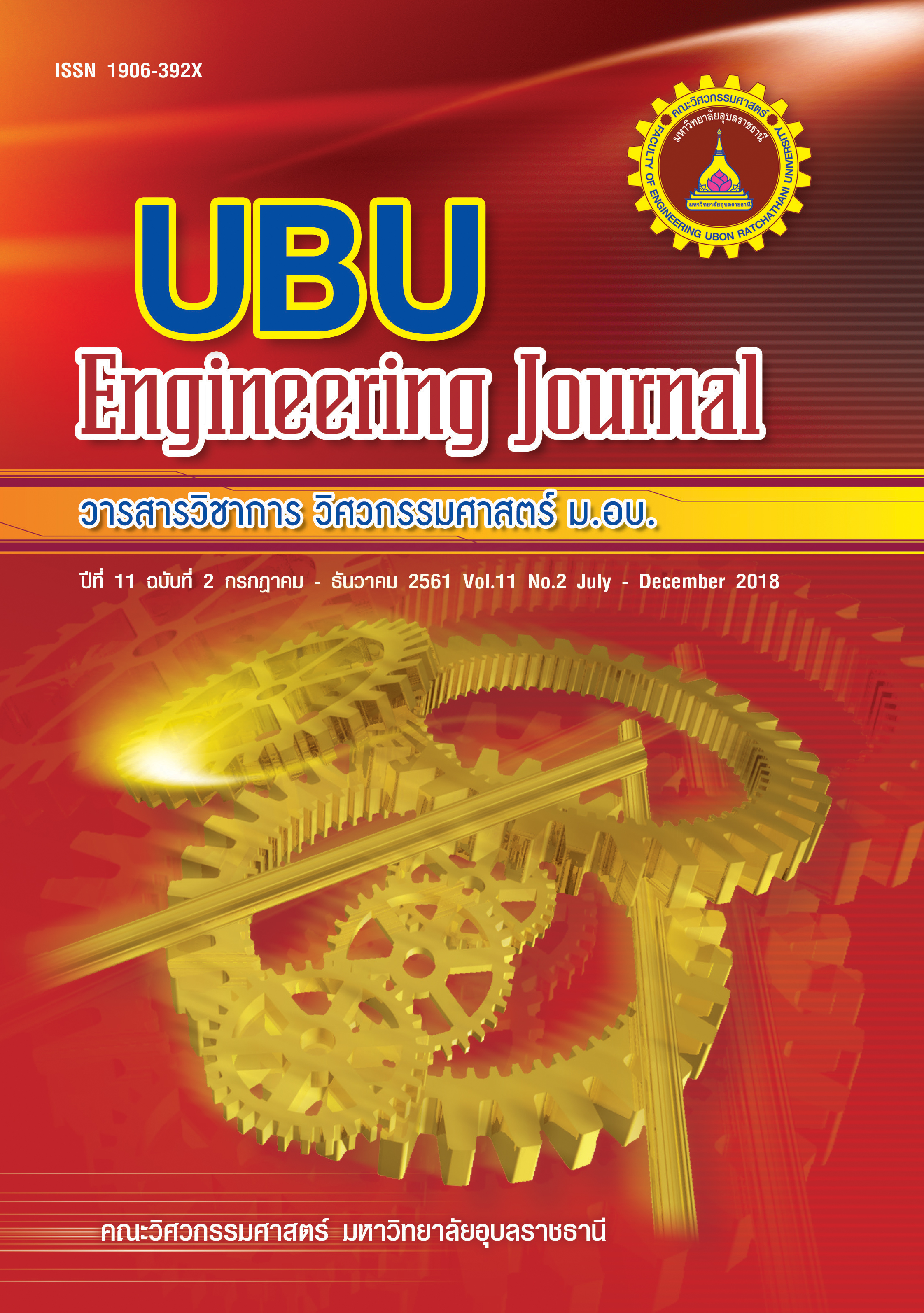ALOHA SIMULATION ON THE LEAKAGE ACCIDENT OF CO2 IN GAS WELDING PROCESS
Main Article Content
Abstract
Chemical accident is a major problem in environmental pollution. It could occur from chemical leakage which leads to people illness, injury, or death. The automotive industry in Thailand has dramatically grown in recent years and gas welding plays a major role in it. The process uses gas and oxygen to weld metals together. Comparing to other gases, CO2 is the least expensive and can be used without any inert gas. However, the exposure of highly concentrated CO2 can be fatal since it is the cause of asphyxia and suffocation. In this research, the Area Location of Hazardous Atmosphere (ALOHA) model has been chosen to simulate the release of CO2 in storage tank with an objection to predict the most serious incident and the area of threat zones. Assuming the case with a complete rupture of the storage tank, all CO2 will be released. The thread zones, depend on wind speed and temperature, are between 55 and 126 meters. The results indicate an immediately dangerous to life or health (IDLH) value and can be used as a guidance to help deciding and responding in emergency incident in the future.
Article Details
References
[2] Gerard FC, Brian PK, John GL. Hypocapnia and Hypercapnia. Murray and Nadel’s Textbook of Respiratory Medicine. 2016; 2(6): p. 1527–1546.
[3] Kvien K, Flach T, Solomon S, Napoles OM, Hulsbosch DC, Spuijt M. An integrated approach for risk assessment of CO2 infrastructure in the COCATE project. Energy Procedia. 2013; 37: 2932–2940.
[4] Patal P, Sohani N. Hazard evaluation using ALOHA tool in storage area of an oil refinery. International Journal of Research in Engineering and Technology. 2015; 4: 203–209.
[5] Shao H, Duan G. Risk quantitative calculation and ALOHA simulation on the leakage accident of natural gas power plant. Procedia Engineering. 2012; 45: 352–359.
[6] Tseng JM, Su TS. Kuo CY. Consequence evaluation of toxic chemical releases by ALOHA. Procedia Engineering. 2012; 45: 384–389.
[7] Koornneef J, Spruijt M, Molag M, RamÍrez. A, Turkenburg W, Faaij A. Quantitative risk assessment of CO2 transport by pipelines- a review of uncertainties and their impacts. Journal of Hazardous Materials. 2010; 177: 12– 27.

